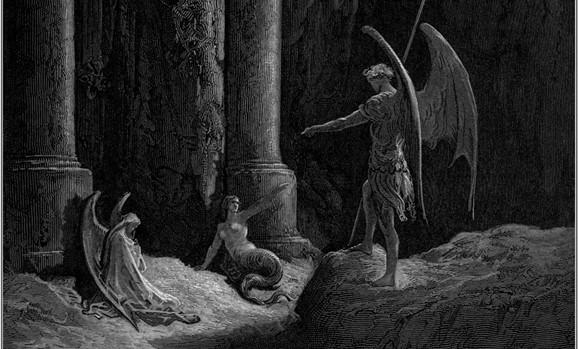In this series, we’ve focused on Gustav Doré’s illustrations for John Milton’s 17th-century epic poem “Paradise Lost.” So far, we’ve covered Satan and the rebel angels being expelled from heaven for waging war against God. We also covered Satan rallying his troops and becoming the king of hell. In this article, we ask: Why does Satan leave hell, and what does he discover at its gate?
After the rebel angels built an empire called Pandemonium, Satan takes the throne and begins to discuss future plans of rebellion with his cohorts. Everyone agrees that fighting God in heaven is an exercise in futility, for they know they cannot win. Some of the angels, however, suggest that they would rather be eliminated from existence than continue to endure the horrors of hell.





